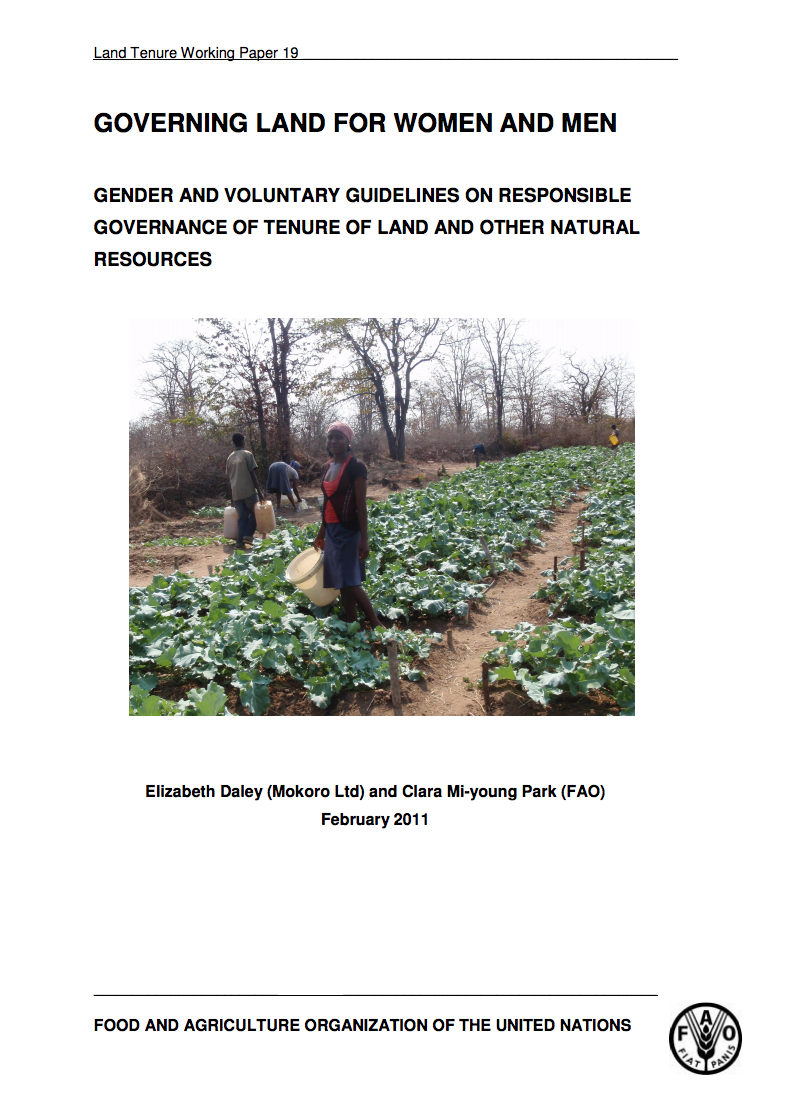In setting out principles and internationally agreed standards, the “Voluntary Guidelines on the Responsible Governance of Tenure of Land and Other Natural Resources” intend to provide practical guidance to states, civil society and the private sector on responsible governance of tenure. The Voluntary Guidelines (VG) will constitute a framework for policies, legislation and programs, but will not establish legally binding obligations nor replace existing national or international laws, treaties or agreements (FAO 2009c). The VG are intended to be supported by a series of “Technical Guides” – practical, up-to-date reference tools for those working on the day-to-day ground level implementation of the VG, and which will represent the link between the VG and the implementation processes and actions required to improve governance of tenure. Among these guides, the Gender Technical Guide – with the proposed title of “Governing Land for Women and Men” – will focus on gender-equitable land governance and what this means in practice for all the national and local government officials, civil society groups, and land administrators, technicians and professionals working in the land sector worldwide. The present paper is written as part of the overall VG consultation and development process and is a contribution to the subsequent preparation of the Gender Technical Guide. The present paper is based both on the outcomes of the VG consultation process to date and on supporting research, consultation and literature review on gender and governance of tenure. It contextualises and defines gender for the VG, discusses what governance of tenure means from a gender perspective, and identifies and analyses key issues and themes. It then summarises the recommendations relevant to gender that emerged during the VG consultations in different regions of the world before drawing some conclusions for the continuing VG development process.

